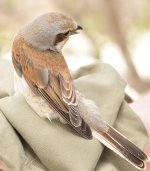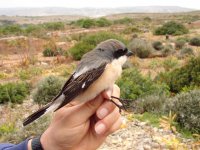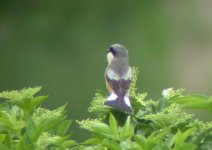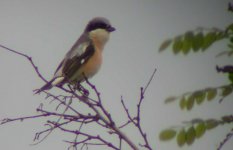ruggiel
Luciano Ruggieri
http://lh6.ggpht.com/_cApylz4gDCg/SLL4XEAHUmI/AAAAAAAAB8w/sEgK5Q_t-GI/shrike.jpg
Here is a similar tail pattern on a Grey-backed Fiscal Shrike
Do you have a link to the video on your tube?
Video on Youtube (also in HQ) by W.Viganò
http://www.youtube.com/watch?v=dxy70jG9t38









